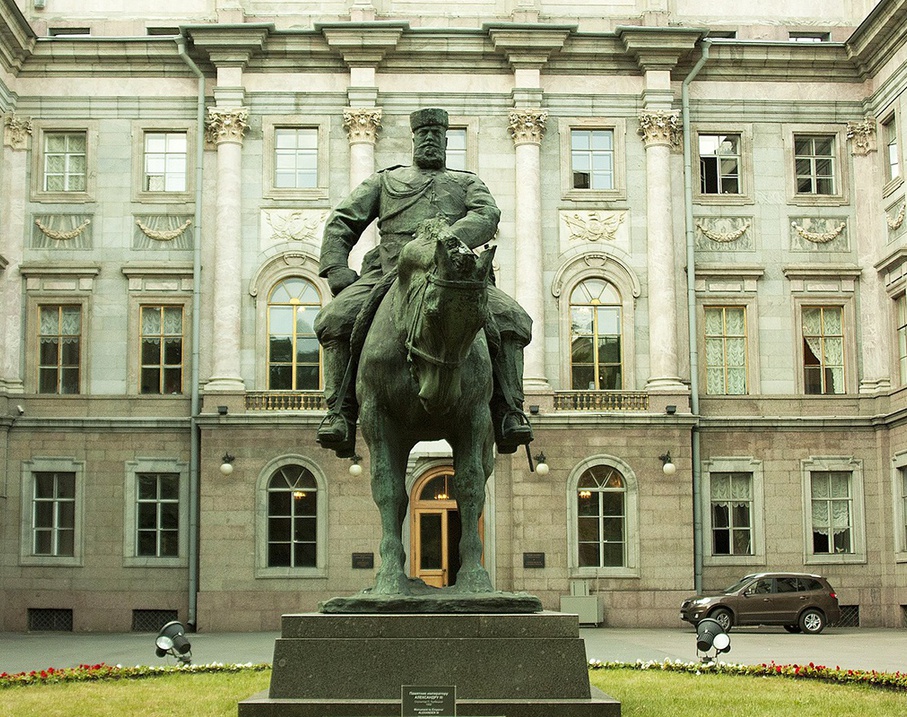
On May 5, 1909, the famous monument to Alexander III was opened in St. Petersburg. The idea of creating a monument to the emperor arose in the autumn of 1894. The initiative was supported by the St. Petersburg City Duma and Sergey Witte, who was the Minister of Communication at that time. The emperor Nicholas II also supported the initiative, and the Duma launched a nationwide subscription to create the monument. The monument was located on Znamenskaya Square near the Nikolayevskaya (Moskovskaya) railway station, as Alexander III was considered the "founder of the Great Siberian Route," which began at the Nikolayevskaya station
A competition for the design of the monument was announced on November 25, 1899. Leading sculptor-monumentalists such as Alexander Opekushin, Matvey Chizhov, Vladimir Beklemishev, and Paolo Trubetskoy participated in the competition. It was Trubetskoy's sculpture of the emperor seated on a throne that caught the attention of the commission. However, Trubetskoy's project was not chosen as the winner in the first stage of the competition. For the second round, Trubetskoy presented a completely different work - an equestrian statue with two pedestal variations. The project with the second pedestal variation ultimately received the highest approval
The monument was planned to be opened by the end of 1902 when the construction of the railway was completed. However, the work on the monument took several more years. It was only in 1906 that the model of the monument was approved. The total height of the monument, including the base, was 8.5 meters. The bronze statue of Alexander III was dressed in a parade general's uniform, and the horse figure was relatively large with a short-cropped mane and tail. The pedestal, made of Valaam red granite, was simplified compared to the original design. The following inscription was placed on the front side of the pedestal: "To Emperor Alexander III, the Founding Father of the Great Siberian Route"
The monument was officially opened and consecrated on June 5, 1909. The opening ceremony was attended by Emperor Nicholas II, and the service was led by Metropolitan Antony Vadkovsky. The entire Imperial Court and the troops of the St. Petersburg Garrison were present at the ceremony. Trubetskoy, however, did not attend the unveiling of the monument. His work received a mixed reaction from the public, with some finding it amusing and others criticizing its appearance
The monument to Alexander III has had a tumultuous history. After the February Revolution in 1917, it was periodically covered with revolutionary compositions by order of the Temporary Government. Two years later, a sacrilegious poem by Dmitry Merezhkovsky was engraved on the pedestal. The monument was dismantled in 1937 and stored in the reserves of the Russian Museum, while the pedestal was disassembled. In 1994, the equestrian statue of Alexander III was finally installed on a pedestal near the Marble Palace, a branch of the State Russian Museum, where it remains to this day

















